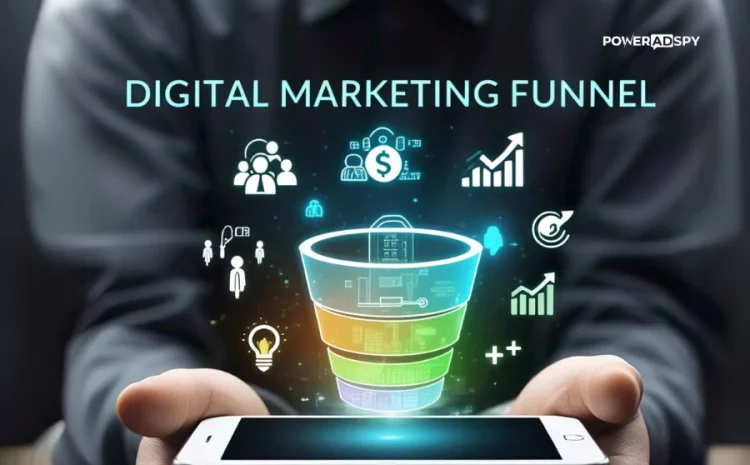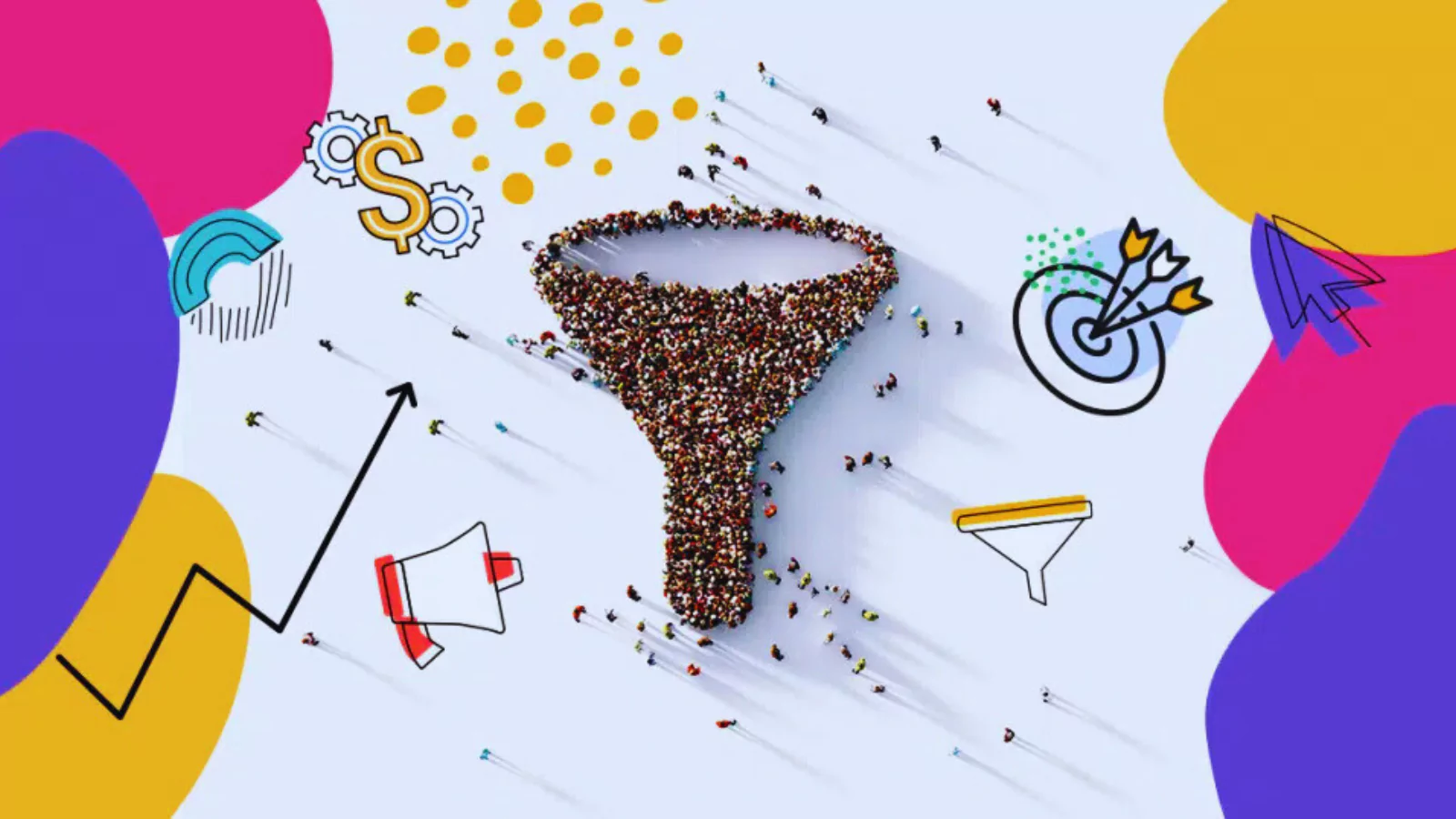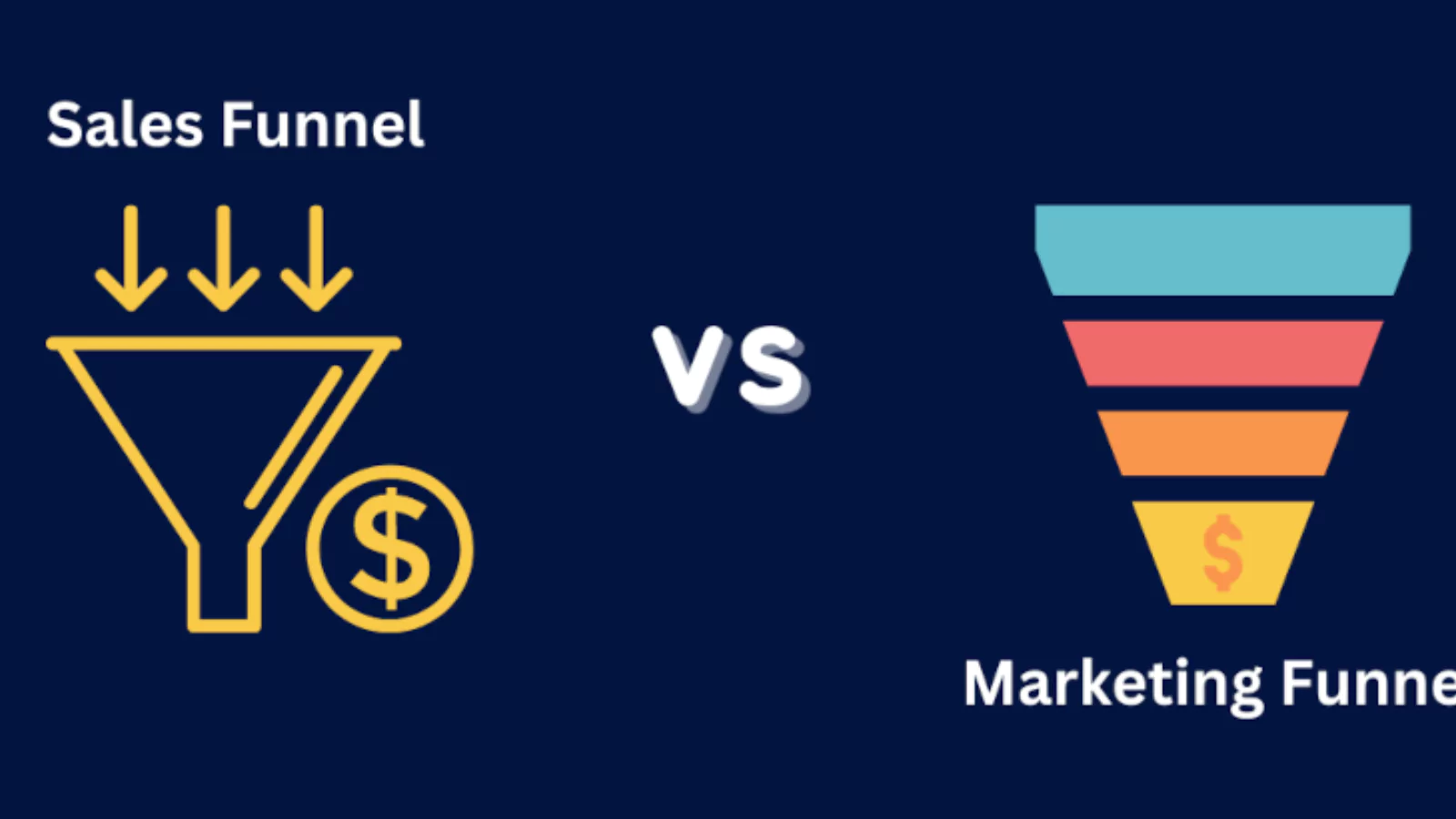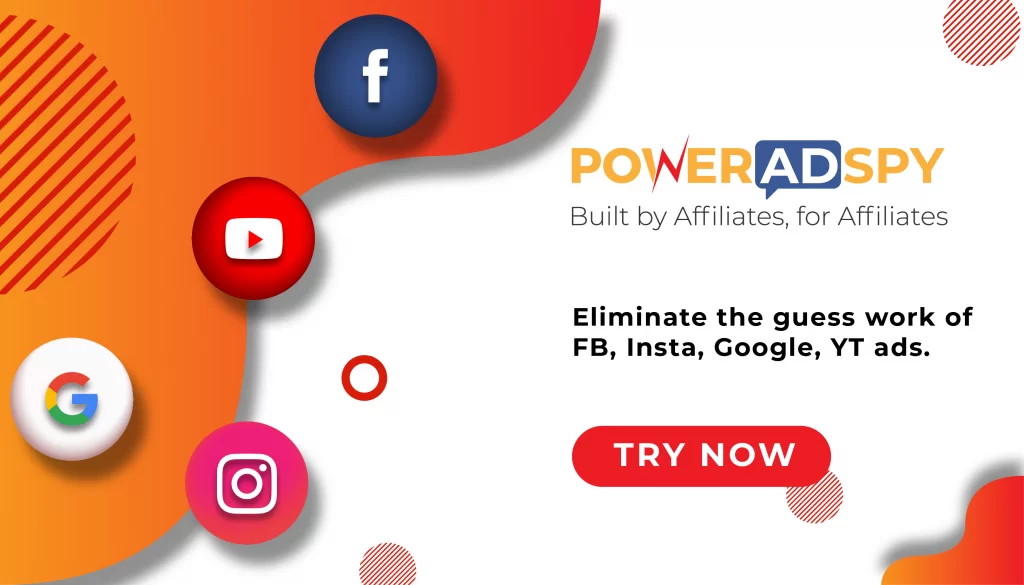Digital Marketing Funnel Secrets: A Guide To Explosive Growth
Did you know that 570,000+ websites use marketing funnel-building tools to drive conversions? Yet, many businesses still struggle to guide potential customers smoothly from awareness to purchase. A well-structured digital marketing funnel is the backbone of successful online campaigns. It’s not just about attracting traffic—it’s about nurturing leads, building trust, and converting them into loyal customers.
In this guide, we’ll break down the digital marketing funnel stages, explain how to optimize each phase, and explore how tools like ad spy tools and ad intelligence tools can refine your strategy.
Listen To The Podcast Now!
What Is A Digital Marketing Funnel?
A digital marketing funnel is a strategic model that maps the customer journey—from the first interaction with your brand to the final purchase and beyond. Unlike traditional sales funnels, funnel for digital marketing account for the non-linear path consumers take, often jumping between stages before converting.
The digital marketing funnel helps businesses:
- Segment audiences based on their engagement level.
- Deliver targeted content that matches their intent.
- Improve conversion rates by addressing pain points at each stage.
Now, let’s dive into the key stages of a digital marketing funnel and how to optimize them.
The 6 Key Stages Of A Digital Marketing Funnel
1. Awareness: Capture Attention
At this stage, potential customers are just discovering your brand. They may come across your content through SEO-optimized blog posts, social media ads, or Google search ads. The goal is to make a strong first impression and spark curiosity. Creating educational blog posts, engaging videos, or visually appealing infographics can help draw attention. Running paid ads targeting broad keywords can also increase brand visibility. Once potential customers are aware of your brand, the next challenge is keeping them interested.
2. Discovery: Spark Interest
Now that users are aware of your brand, they start exploring more about what you offer. They might browse your website, sign up for a free guide, or follow your social media pages to stay updated. The primary goal at this stage is to convert visitors into leads by providing valuable resources. Lead magnets like e-books, checklists, and webinars can encourage sign-ups, while email newsletters help nurture their interest. Retargeting ads serve as reminders, keeping your brand top-of-mind. Once users show interest, the next step is guiding them toward considering your solution.
3. Consideration: Build Trust
At this stage of the digital marketing funnel, potential buyers are actively comparing different options and looking for proof that your product or service is the right choice. The goal is to differentiate your brand from competitors by providing compelling evidence of your value. Case studies and customer testimonials showcase real-world success, while comparison guides help potential buyers understand how your product stands out. Offering live demos or free trials allows them to experience your solution firsthand, increasing their confidence in making a purchase. Once they are convinced, the focus shifts to closing the deal.
4. Conversion: Close The Deal
This is the point where leads turn into customers. A seamless checkout process, clear product information, and strong calls to action (CTAs) play a crucial role in ensuring conversions. The goal is to remove any friction that might prevent a purchase. Limited-time offers and discounts create urgency, while well-structured product pages with FAQs address potential concerns. Personalized email campaigns can provide final nudges, helping prospects take the last step toward making a purchase. However, the customer journey doesn’t end here—retaining and nurturing customers is just as important.
5. Customer Relationship: Foster Loyalty
After making a purchase, customers should feel valued and supported to encourage repeat business. The goal at this stage is to turn one-time buyers into loyal customers by maintaining engagement. Sending thank-you emails with exclusive offers makes them feel appreciated, while tutorials and onboarding guides help them get the most out of their purchase. Loyalty programs can incentivize repeat purchases, strengthening the customer-brand relationship. Once loyalty is established, the next step is turning these satisfied customers into brand advocates.
6. Retention & Advocacy: Encourage Word-of-Mouth
Loyal customers can become powerful advocates for your brand by sharing their positive experiences with others. The goal is to encourage word-of-mouth marketing and build long-term brand ambassadors. Referral programs offer incentives for customers to recommend your product to friends and family, while user-generated content campaigns encourage them to share their stories. Providing exclusive community access or VIP perks makes customers feel special, further deepening their connection with your brand.
How To Optimize Your Digital Marketing Funnel?
Follow these tips to optimize your digital marketing funnel:
Harness Data-Driven Insights
Modern marketing or digital marketing funnels rely on data to make informed decisions. Utilizing ad spy tools and ad intelligence platforms provides valuable insights into competitor campaign strategies, audience targeting patterns, and high-converting ad creatives. These insights help businesses reverse-engineer successful competitor campaigns, identify untapped audience segments, determine which visual elements and messaging resonate most, and optimize ad spending by focusing on proven strategies.
Personalize Every Customer Interaction
Generic messaging is no longer effective. Advanced segmentation enables businesses to create dynamic content paths based on user behavior, send targeted emails to cart abandoners with special incentives, customize landing pages for different audience demographics, and develop retargeting campaigns that address specific pain points.
Implement Continuous Testing Frameworks
Optimizing conversions requires ongoing experimentation. Businesses can refine their strategies through multivariate testing of landing page elements such as headlines, CTAs, and images; A/B testing email campaigns by experimenting with subject lines, send times, and content formats, testing different variations of ad creatives; and analyzing user flow to identify drop-off points in the conversion path. Testing can improve your digital marketing funnel strategy.
Automate Customer Journey Touchpoints
Automation ensures seamless customer interactions at every stage. Businesses can streamline their processes by triggering personalized email sequences based on user actions, deploying chatbots for instant customer support, scheduling social media retargeting for warm leads, and automating loyalty reward distribution to enhance customer retention.
Also Read
The Ultimate List Of Ad Spy Tools!
Ad Intelligence Tool : The Secret Weapon for Successful Ads
Align Digital Marketing Funnel Stages With Content Strategy
Each stage of the customer journey requires a tailored content approach. Educational blogs and awareness videos work best at the top of the digital marketing funnel, while comparison guides and demo requests help nurture leads in the middle. Case studies and limited-time offers drive conversions at the bottom, and onboarding materials or exclusive perks encourage post-purchase engagement.
By systematically implementing these optimization techniques, businesses create a frictionless customer journey that adapts to evolving behaviors while maximizing marketing investments. Continuous monitoring and refinement ensure that strategies remain effective in the ever-changing digital world.
Utilize Ad Intelligence Tools Strategically
Advanced ad intelligence platforms offer real-time monitoring of industry ad trends, creative performance benchmarks within a niche, audience insights for refined targeting, and predictive analytics to determine the best campaign timing. These tools allow marketers to make data-driven decisions that optimize digital marketing funnel strategy. Let us explore one such tool and learn how it can help you.
PowerAdSpy – Ad Intelligence Tool
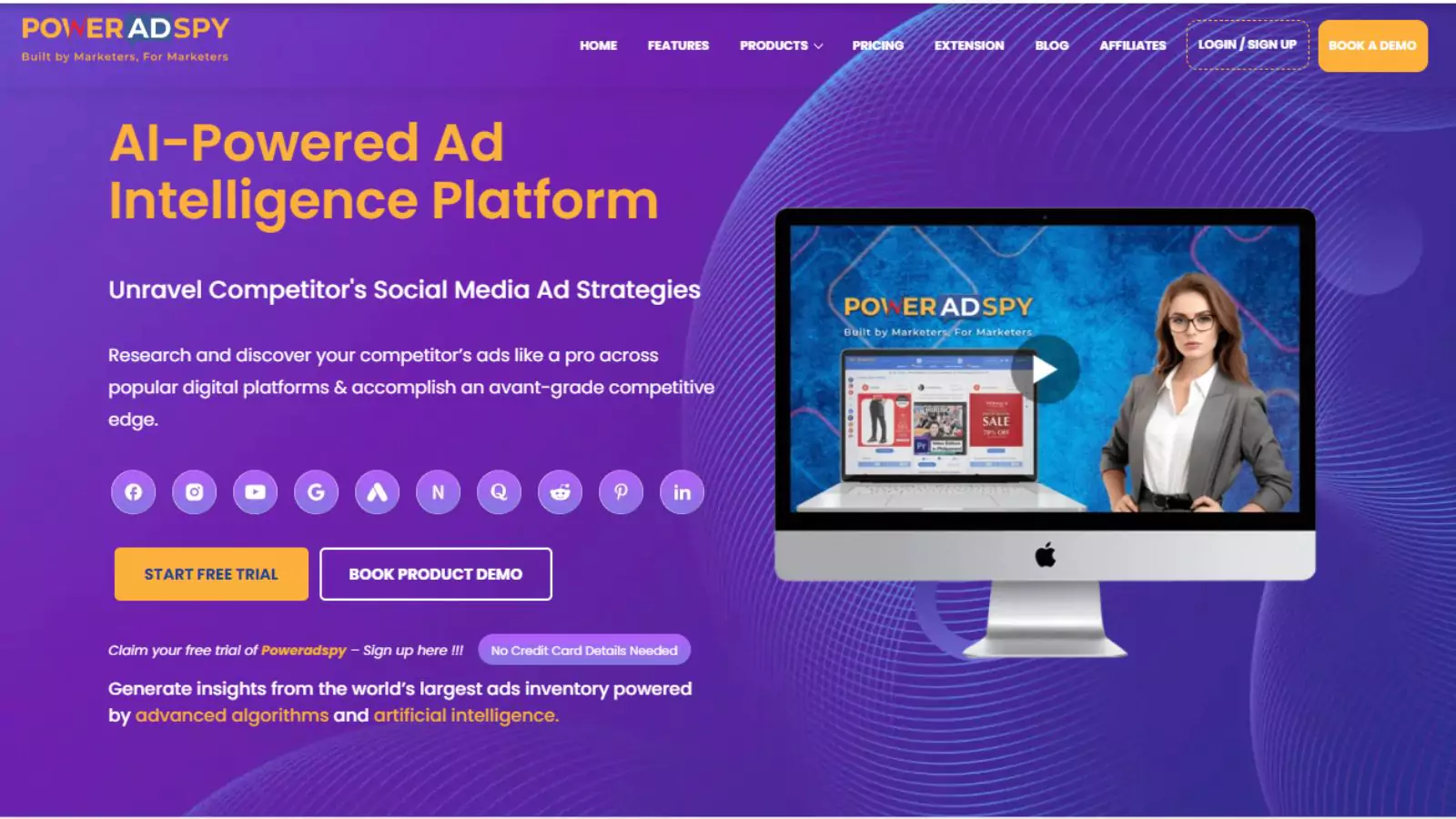
PowerAdSpy is designed to give you a competitive edge by providing deep insights into ad performance across multiple platforms. Whether you’re analyzing competitors or looking for inspiration, it makes ad research it effortless. With a vast database of successful ads from 100+ countries, real-time engagement insights, and powerful search filters, PowerAdSpy makes ad research effortless. Instead of relying on trial and error, you can reverse engineer winning campaigns and apply proven strategies to your advertising efforts.
Here’s how PowerAdSpy can help you create high-performing ad campaigns:
Analyze Ad Placements for Better Conversions
Not all ads perform the same. With PowerAdSpy, you can filter ads based on their positions—whether in the news feed or sidebar—so you can determine which placement works best for your niche and maximize conversions.
Get Full Visibility into Live Ads
Transparency is key in ad research. PowerAdSpy lets you view live ad posts directly from the platform, allowing you to analyze real-time engagement, audience reactions, and ad performance without any guesswork.
Access a Massive Database of Ads from 100+ Countries
With millions of ads from over 100 countries, PowerAdSpy continuously updates its database to ensure you have access to the latest, most successful ad campaigns. New ads are added daily, so you’re always a step ahead of the competition.
Find the Right Ads with Advanced Search Filters
Easily refine your search using keywords, advertiser names, or competitor domains. You can even explore top-performing advertisers and analyze all the ads they’re running to gain valuable insights for your campaigns.
Save Winning Ads for Future Use
Came across an ad that caught your attention? Bookmark it with a single click and store it in your personalized ad inventory. No need to waste time searching for it again later—your best ad ideas are always at your fingertips.
Discover High-Performing Ads with a Powerful Search Algorithm
Search for ads using popular keywords or phrases, then sort them by engagement metrics like shares, likes, and comments. This helps you identify top-performing ads and apply the same winning strategies to your campaigns.
Analyze Engagement Data for Smarter Decisions
Understanding how people interact with ads is crucial. PowerAdSpy provides engagement-focused insights, helping you identify which ads generate the most audience interest so you can refine your approach accordingly.
Explore a Mix of Video and Image Ads
While images are effective, video ads often drive even better results. PowerAdSpy offers a growing collection of social video ads, giving you a clear view of what works. Plus, you can download these videos to create your own high-performing campaigns.
With PowerAdSpy, you don’t just track ads—you gain the intelligence needed to run successful, high-converting campaigns. Start exploring now, and take your advertising game to the next level!
Marketing Funnel Vs. Sales Funnel: What’s The Difference?
You might have heard the terms “marketing funnel” and “sales funnel” used interchangeably—some even combine them into a single “marketing sales funnel.” But while they work together, they serve different purposes.
- Marketing Funnel focuses on building brand awareness, engaging potential customers, and generating qualified leads.
- Sales Funnel in digital marketing is all about converting those leads into paying customers and fostering repeat business.
When marketing and sales teams align, they create a smoother, more effective customer journey.
How To Use A Full-Funnel Marketing Approach
The digital marketing funnel is a great framework for guiding customers from awareness to purchase, but real-life buying journeys aren’t always linear. Today’s shoppers might jump between stages, skip steps, or enter the funnel at any point.
A full-funnel approach helps you meet customers wherever they are, ensuring no opportunity for engagement is missed.
Example: Osmo’s Success With Full-Funnel Marketing
In the competitive STEM toy market, Osmo used a full-funnel strategy to connect with both new and returning customers at different stages of their buying journey. By leveraging Amazon Ads, they boosted brand awareness and drove sales.
How To Measure Full-Funnel Marketing Success
Without tracking performance, you won’t know if your strategy is working. Here’s how to measure impact at each stage:
1. Understand How Channels Work Together
A full-funnel strategy often involves multiple marketing channels. To optimize performance, set clear benchmarks for success at each stage:
- Top of Funnel (TOFU – Awareness)
- Metrics: Unique reach, video completion rate, click-through rate (CTR)
- Goal: Get your brand in front of as many potential customers as possible.
- Middle of Funnel (MOFU – Consideration)
- Metrics: Product page views, new-to-brand percentage, branded searches
- Goal: Nurture interest and guide shoppers closer to a purchase.
- Bottom of Funnel (BOFU – Conversion)
- Metrics: Return on ad spend (ROAS), conversion rate, customer acquisition cost (CAC)
- Goal: Turn interested shoppers into buyers.
Tools like Amazon Attribution can help track how non-Amazon ads (like social media or display ads) contribute to sales on Amazon.
2. Tailor Your Messaging to the Shopping Journey
Using an ad server, you can customize ads based on where a customer is in their journey. For example:
- Show a special offer to someone who’s already viewed your product.
- Use a brand awareness message for new audiences.
This ensures that the right message reaches the right person at the right time.
3. Compare Your Performance to Competitors
Benchmarking tools let you see how your ad spending and results stack up against competitors in your industry. Are you overspending on awareness but underperforming on conversions? Adjust your strategy accordingly.
Final Thoughts
A well-structured digital marketing funnel doesn’t just drive sales—it builds lasting customer relationships. By understanding each stage and optimizing your approach, you can turn casual browsers into loyal advocates.
Want to refine your funnel further? Explore how ad intelligence tools can give you a competitive edge in crafting high-converting campaigns.
FAQs
What Is an SEO Funnel, and How Does It Work?
An SEO funnel is a structured process that helps convert website visitors into customers by guiding them through different stages of decision-making. It starts with attracting potential customers who may not yet be familiar with your brand and gradually nurtures them with relevant content until they’re ready to make a purchase. Each stage—awareness, consideration, and conversion—is designed to provide the right information at the right time, ensuring a smooth journey from discovery to action.
What is a B2B sales funnel?
A B2B sales funnel outlines the stages that prospective customers go through during the buying process. Sales teams engage with leads at each stage to guide them toward making a purchase.

